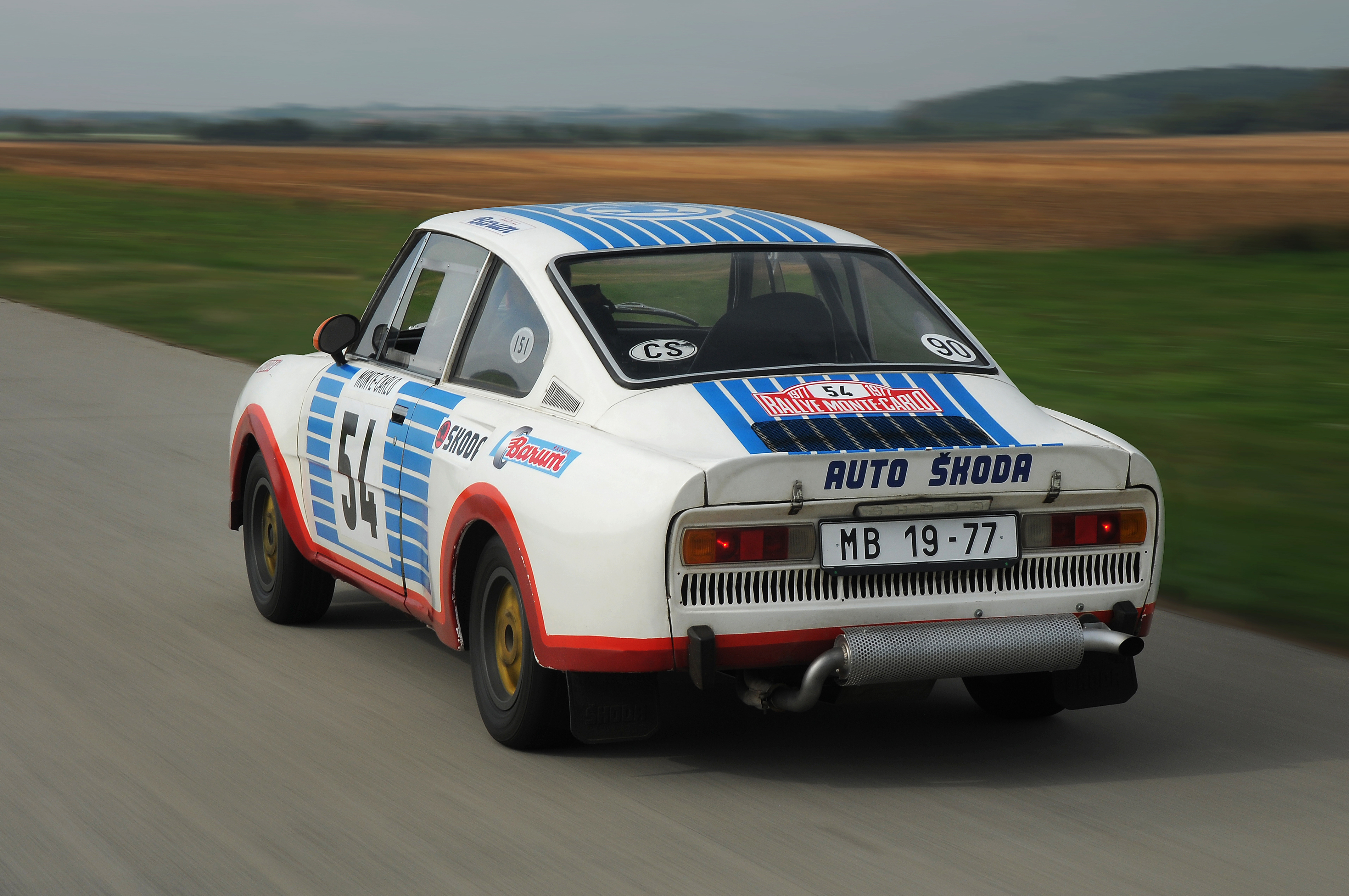But that was just the beginning: in the following season a rally version of the ŠKODA 130 RS was launched. Its high point came in January 1977 and the traditional Monte Carlo Rally.
The ŠKODA works team prepared meticulously, with each of the crews driving around 500 kilometres a day in training on the course. Once the event had officially begun, one of the four ŠKODA 120 LS escort cars and one 130 RS always completed the stage just before it was closed, and the 130 RS driver then recommended the best tyres from the Czechoslovak brand Barum to the service crew.

198 crews started the race on 22 January 1977, but at the finish line six days later, only 43 cars were classified in addition to the two ŠKODA 130 RS coupés. Václav Blahna and Lubislav Hlávka won their class and group 2, followed by Milan Zapadlo and Jiří Motal. The 130 RS coupé finished twelfth and fifteenth in the overall classification in competition with much larger and more powerful rally cars.
 The ŠKODA team at the 1977 Monte Carlo Rally. From left: Lubislav Hlávka, Jiří Kotek and Jiří Motal; to the right of the car: drivers Milan Zapadlo, Svatopluk Kvaizar and Václav Blahna.
The ŠKODA team at the 1977 Monte Carlo Rally. From left: Lubislav Hlávka, Jiří Kotek and Jiří Motal; to the right of the car: drivers Milan Zapadlo, Svatopluk Kvaizar and Václav Blahna.
After this double success at the RMC in 1978, the Zapadlo/Motal crew managed to finish ninth overall at Rally Acropolis (and first in their class, of course), and in 1979 and 1981 the ŠKODA 130 RS even finished eighth overall at Europe’s toughest event. During its career, the racing coupé notched up lots of outstanding results in both domestic and international competition. Historically, the 130 RS coupé’s greatest achievement was its overall manufacturer’s victory in the 1981 European Touring Car Championship. The car’s successful era ended in 1983.




































